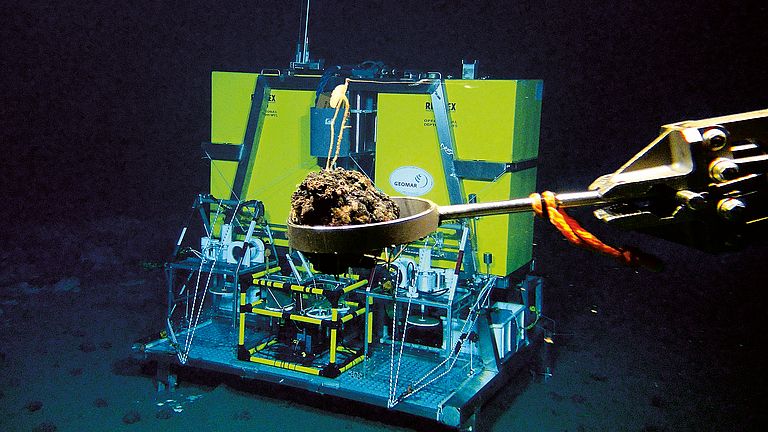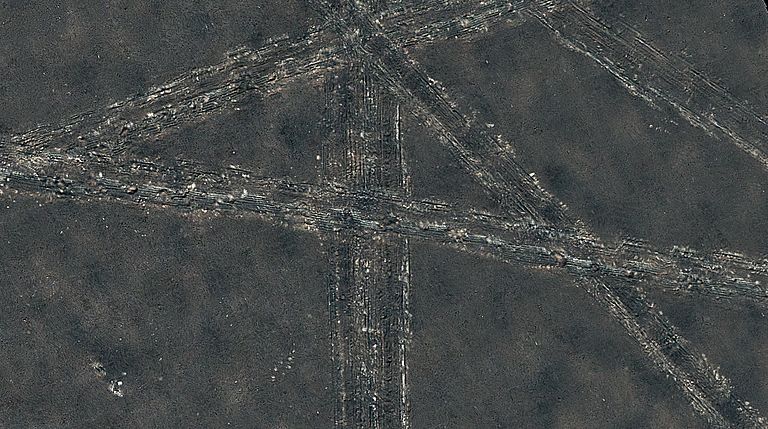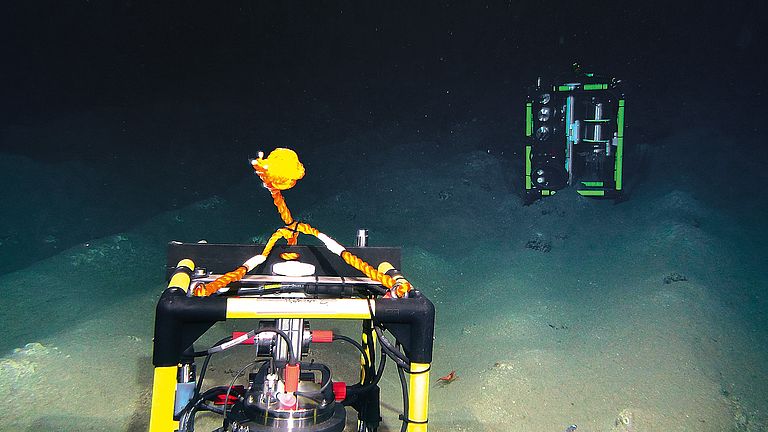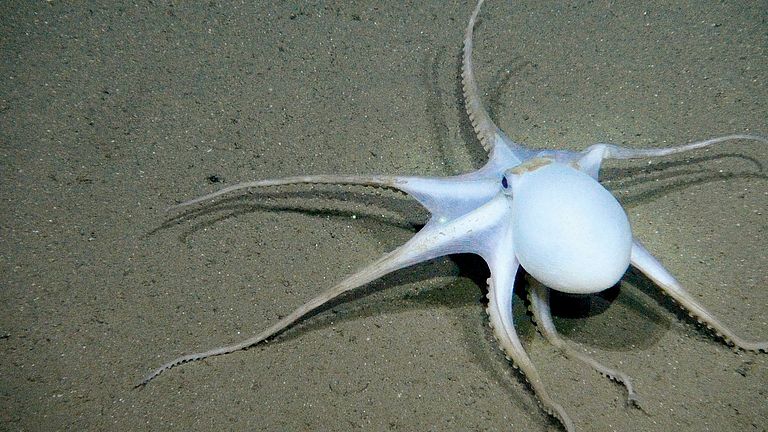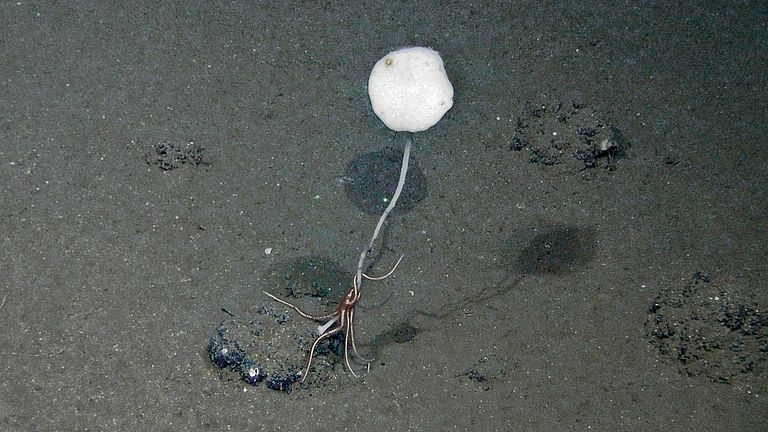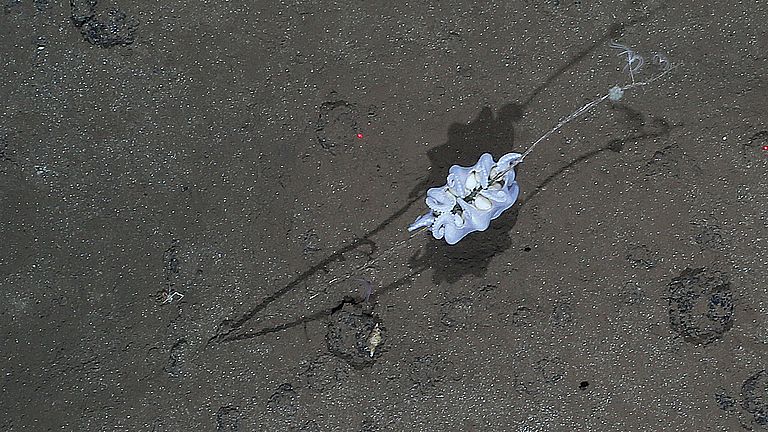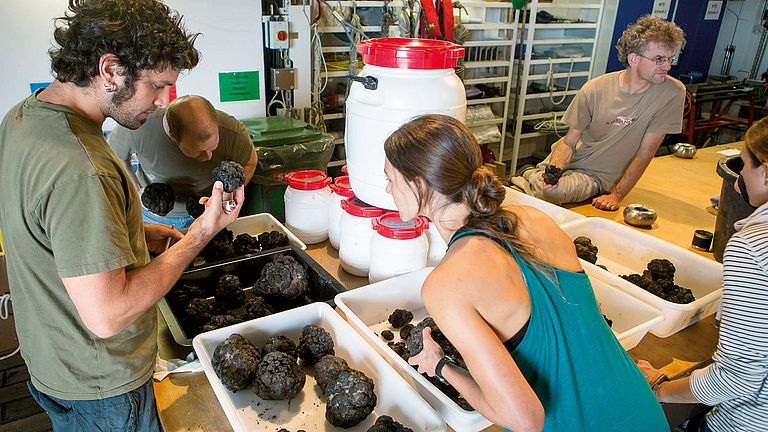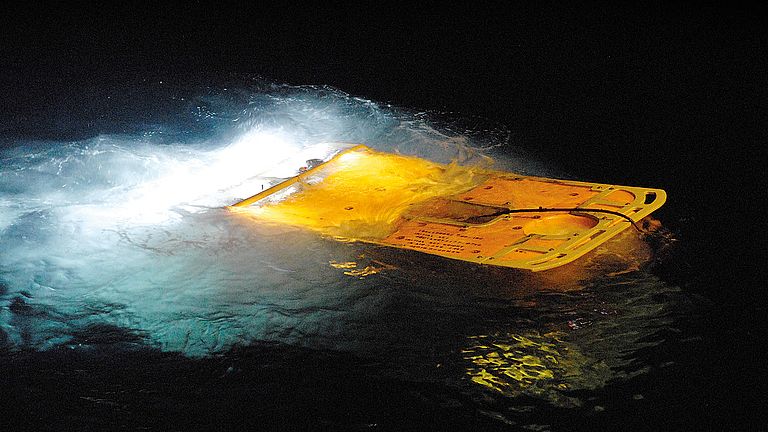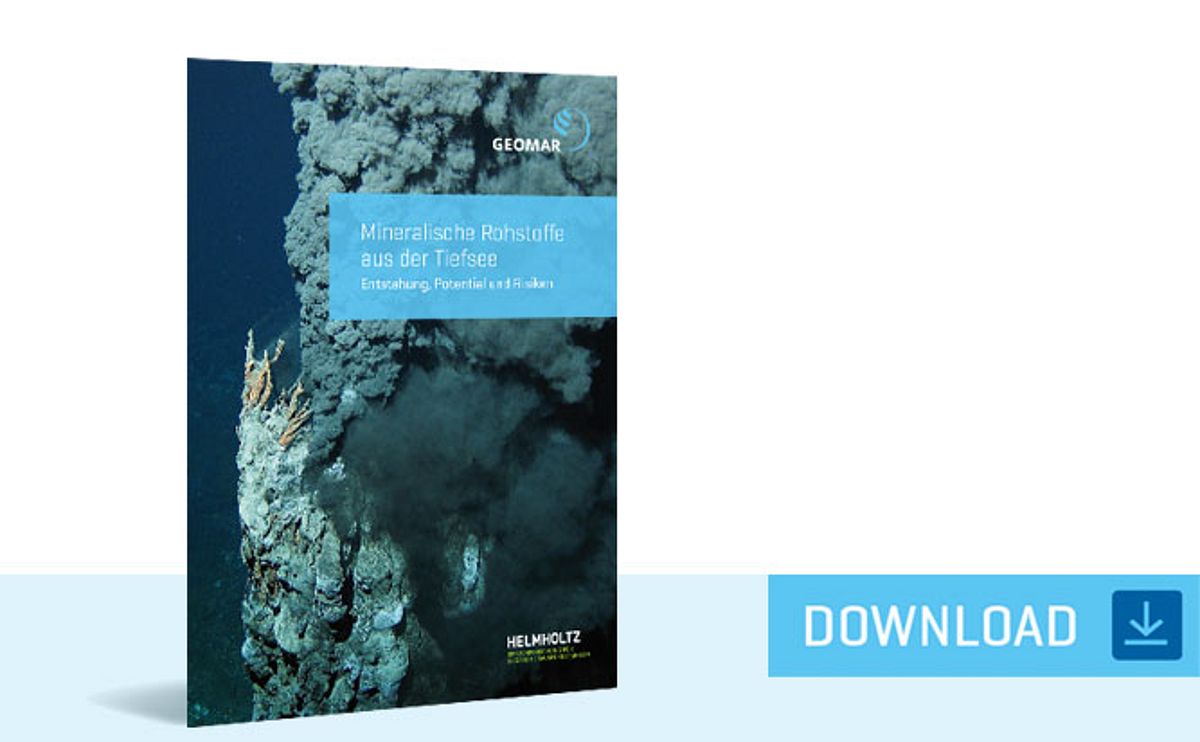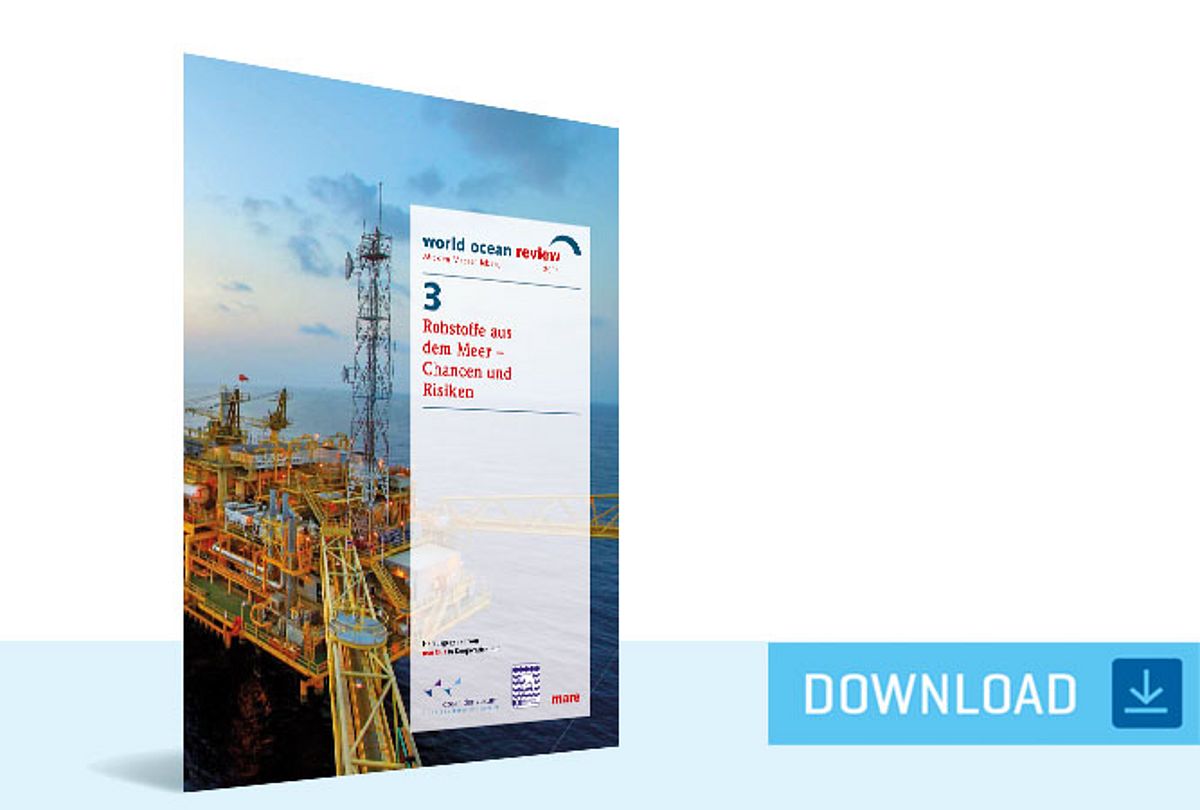GEOMAR Helmholtz Centre for Ocean Research Kiel
Communication and Media
Fon 0431 600-2807
Mail media(at)geomar.de
Miningimpact - Monitoring of the Environmental Impacts of Deep-Sea Mining
What consequences for the abyssal ecosystem result from mining of metal resources in the deep sea? How can the unavoidable environmental impacts be kept to a minimum? Which environmental standards and threshold values can be defined? And how can compliance with mining regulations be monitored? The international project MiningImpact, coordinated at GEOMAR with researchers from 11 European countries, aims to assess the long-term impacts and environmental risks of deep-sea mining of manganese nodules. In 2015, three expeditions were carried out in the Clarion-Clipperton-Zone (CCZ) and in the DISCOL area in the Peru Basin to investigate the ecosystem’s response to seafloor disturbances after several decades. During another expedition in 2019 technology for the environmental monitoring of deep-sea mining activities developed at the institutes was tested.
Flashback, 1989, DISCOL project (DISturbance and re-COLonisation): German marine scientists are conducting an unique experiment. They plough about eleven square kilometres of seabed in a deep-sea plain far offshore Peru. They remove manganese nodules from the surface, suspend the sediment, and destroy the fauna on a small scale. All of this serves a scientific purpose – the scientists want to find out what ecological consequences manganese nodule mining would have, how long it would take for the ecosystem to recover, and if it would be possible to manage deep-sea resource extraction in an environmentally friendly way.
26 years later, in 2015, state-of-the-art technologies helped an international research team to assess the possible longer-term consequences of mining. During the SO242 expedition with the research vessel SONNE, precise maps of the plough tracks on the seabed were produced. Photos and videos gave the researchers a comprehensive and detailed impression of the environmental impact. The diving robot ROV Kiel 6000 was used to collect targeted samples from the disturbances, measure microbial activities and carry out toxicological experiments on the seabed at a depth of more than 4,000 metres.
The main results that were derived by the MiningImpact project from investigating these small seabed disturbances with respect to the anticipated much larger future industrial-scale deep-sea mining operations are that the environmental impacts will be long-term and will affect all ecosystem compartments. For many decades to centuries, the composition of faunal communities will be altered, and population densities and biodiversity of fauna as well as ecosystem functions such as productivity and microbial activity will be greatly reduced.
An environmental risk that has been difficult to assess so far is the spread of the suspended sediment plumes and the additional impact area at the seabed resulting from it. In spring 2019, MiningImpact therefore carried out extensive tests of sensors and methods for environmental monitoring in some licence areas of the CCZ.
Due to the sustained destruction of the deep-sea ecosystem in the mining areas and their vicinity, the international regulations of ISA must therefore include not only strategies for comprehensive environmental monitoring but also concepts for environmental management and adaptive spatial planning. This poses a major challenge because the deep-sea and in particular the manganese nodule habitats are highly diverse and variable and species connectivity over long distances is not understood at the moment. The MiningImpact project develops proposals for solutions.
Video: Impact and Risks of Deep Sea Mining
This video was filmed during the research cruise SO268-2 from April to May 2019. The expedition was integrated into the second phase of the European joint project MiningImpact


